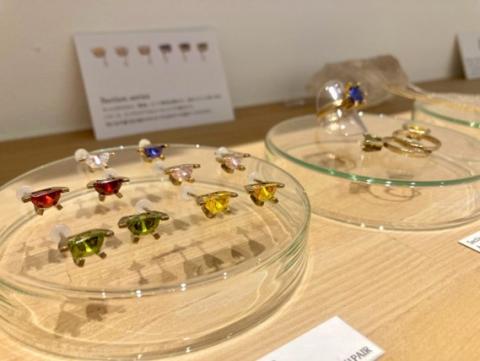Main content starts here.
Mizu Shingen Mochi (水信玄餅)
At 9:10, my Japanese friend and I got off the bus at the Daigahara-Kami station.
I am not a morning person, I have some difficulty even getting up this early for classes in college. But today was different.
After taking a two-minute walk down the Koshu-kaido, a narrow road lined with low-slung traditional Japanese houses, Kinseiken (金精軒) — an over one-century-old shop that sells Japanese sweets — came into view.
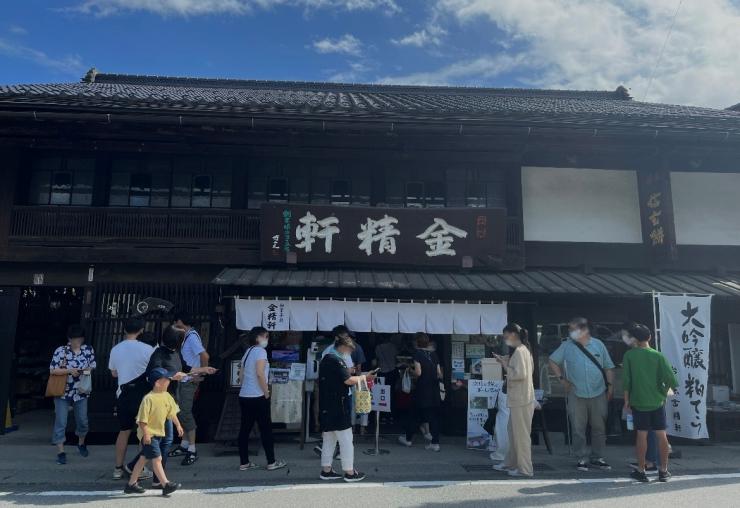
Located at the Koshu-kaido, a road chosen for the 100 best roads in Japan, the appearance of the Kinseiken had been transformed from an archaic Japanese inn. Together with an inscription "創業明治35年" (Founded in Meiji 35 years / 1902 A.D.)on the plaque, the historical precipitation, and pride of Kinseiken as a time-honored shop has been revealed. Though better appreciated for its signature Shingen Mochi (信玄餅), a dessert similar to the sticky rice cake but served with Japanese sugar syrup and soybean. We were not here for the classic Shingen mochi, which is a famous local sweet that usually represents Yamanashi prefecture. We were here at Kinseiken's original store — Daigahara shop, for one thing, and one thing alone:
The Mizu Shingen Mochi (水信玄餅).
Created by a female chef of Kinseiken in 2013, Mizu Shingen Mochi is a limited-time sweet that sells only during the summer in Kinseiken's Daigahara shop and their Nirasaki shop, on Friday, weekends, and holidays, from June to September. Mizu (水), means water in Japanese, the water used for Mizu Shingen Mochi is the local Mt. Kai-komagatake (甲斐駒ケ岳)’s underground water, which is selected from one of the 100 exquisite water resources in Japan. This very popular mineral water (Suntory Natural Mineral Water) is famous throughout Japan for its light sweetness, mellow taste, and high purity. Indeed, the original intention of Mizu Shingen Mochi was to offer customers the easiest way to taste this beautiful local water. This is why it is made only of agar, granulated sugar, and plenty of water.
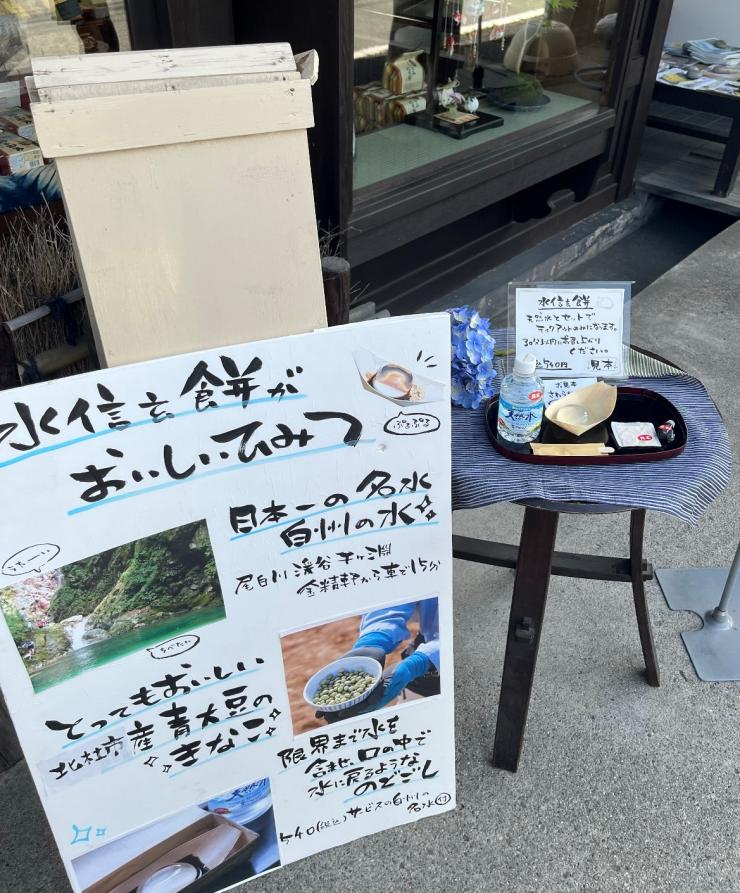
I thought we got here early as the shop had just been open for less than 15 minutes. Nevertheless, the shop was crowded: I couldn't squeeze myself to the front to see what else was in the showcase next to the cash register, and the line of people waiting for the cashier was even extending outside the door. Obviously, they were as afraid as I was of missing out on the Mizu Shingen Mochi, as each shop releases no more than 700 sets each day, one serving per person.
We joined the queue. “At least it appears popular!” I said to my friend. I tried to comfort him but to be honest, more to myself, for feeling bad for troubling him on such a hot day because I can’t speak Japanese. But for someone who loves dessert as much as I do, sometimes being thick-skinned is necessary.
Finally, it was our turn. "2セットお願いします (Two sets, please)." My Japanese friend did the talking. Serving with iced mineral water, each set costs only 540 yen with tax included.
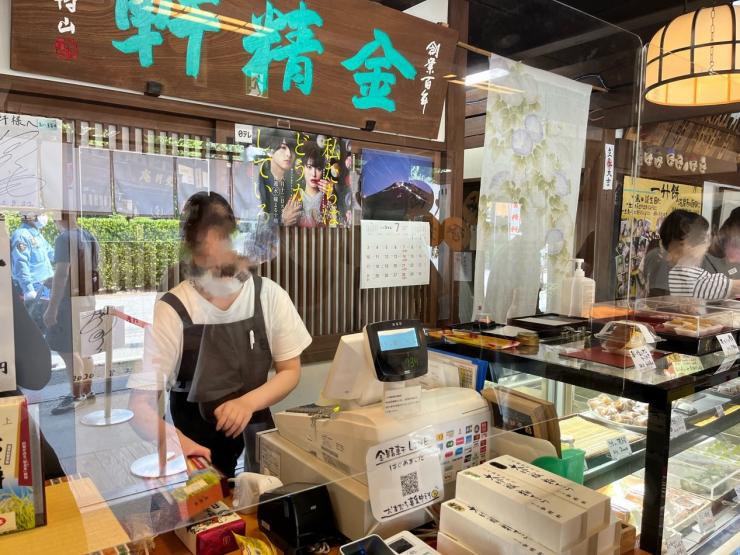
Soon, a shop assistant came out from behind the curtain with two bags in her hand, one containing bottles of local mineral water and the other containing the Mizu Shingen Mochi. She kindly reminded us that Mizu Shingen Mochi only has a shelf life of 30 minutes, if not eaten quickly, the water inside the Mizu Shingen Mochi will seep out, and both the shape and taste will change undesirably. Of course, having a sweet tooth, I had already researched this information before our visit.
As much as we would like to dine inside the shop, Kinseiken only allows takeaway for the concern of the Covid epidemic. So, yes, although it might not seem very Japanese, we opened the plastic bag just outside the shop and decided to eat it on the side of the Koshu-kaido.
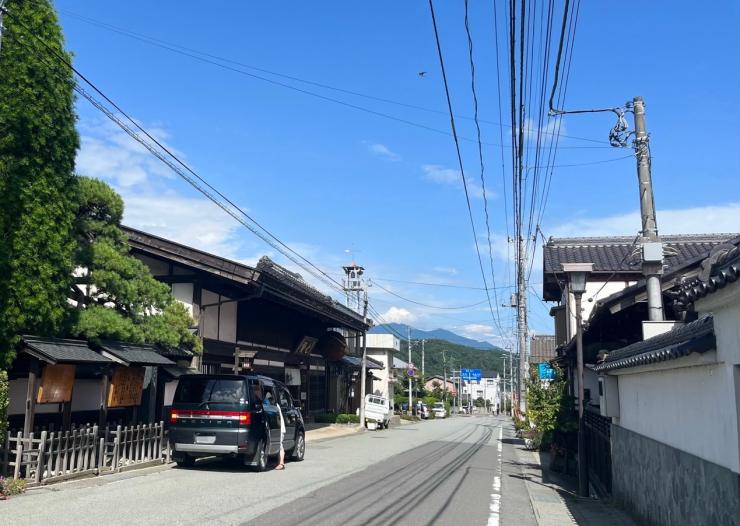
July is the height of summer in Japan, not to mention Hokutoshi, a place far from big cities like Tokyo. Here, the sky is clearer, the area is sparsely populated, quiet, and peaceful. However, since there is no tall building that can block out the sun, the strong ultraviolet light was grilling us. But I didn't care, a more important mission was waiting in front of me --- EATING MIZU SHINGEN MOCHI!
I opened the box with excitement.
No smell, just as I had imagined. Slides on a light-colored canoe, Mizu Shingen Mochi is in the shape of a bead of water, reflecting sunlight. It reminds me of the morning dew on the lotus leaves in the lotus pond on my way to primary school when I was young. It has the elasticity like my newborn nephew's cheek, but at the same time, it is also so transparent that I can easily see the little bubbles inside. From the appearance alone, I knew instantly that it wouldn't give me the kind of uncomfortable greasy taste like other common desserts.
Following the instruction note attached to the box, I sprinkled Kinseiken's homemade soybean powder and brown sugar to the sides, then quickly took a picture and took a spoonful. With a tiny sweet taste and a cool hint of summer, Mizu Shingen Mochi instantaneously fragmented inside my mouth. And before I swallowed it, it seemed to have melted into water. As if drinking brown sugar water without being too sweet, the crumbled Mizu Shingen Mochi slid refreshingly across my throat. It saved me from the hot summer.
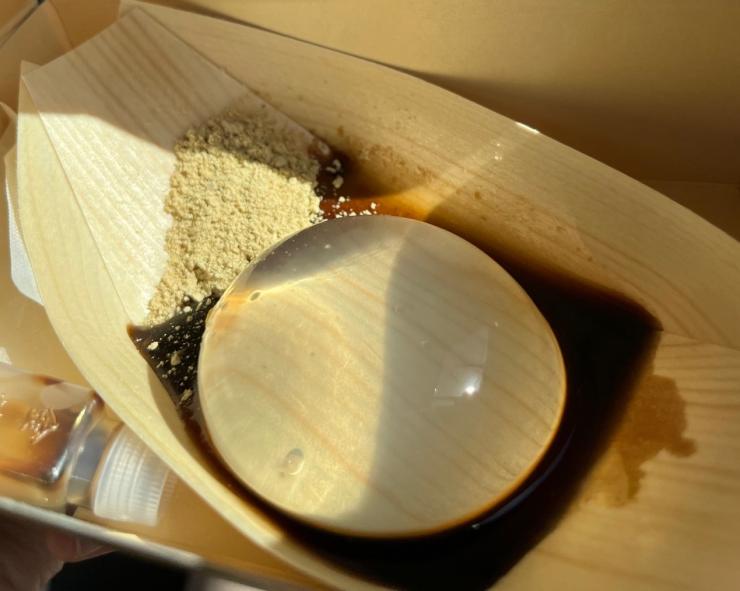
It all happened too fast before I even realized the Mizu Shingen Mochi had all slipped into my stomach. Unable to maintain a ladylike image for a dessert like Mizu Shingen Mochi, I licked the remaining mixture of soybean powder and brown sugar. Honestly, I could eat five of them at a time as long as the shop agree to sell me more.
“How is it?” I asked my friend.
“Totally worth the trip!” While he was replying, I noticed the last small piece of his Mizu Shingen Mochi slip off the spoon.
Kinseiken's Website (English):
KINSEIKEN WAGASHI shop | 金精軒
References:
金精軒. (2022). https://kinseiken.co.jp/news/7544
The Yamanashi Chuo Bank. (2021). Shelf life time only 30 minutes "Mizu-Shingenmochi". FUJI_NOTE. https://www.yamanashibank.co.jp/fuji_note/gourmet/30_1.html
My Navi News. (2021). インスタで話題の「水信玄餅」って? 「天使の涙」との違いも調べてみた. https://news.mynavi.jp/article/20190625-singenmochi/
— LYY
Published on
- January 31, 2023
Share
-

The Golden Peak (金峰山―Kinpusan) of Yamanashi
May 23, 2025
-

May 23, 2025
Home of Mt. Fuji > Kaleidoscope Students Journal > Mizu Shingen Mochi (水信玄餅)
